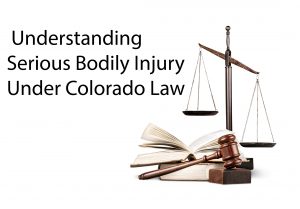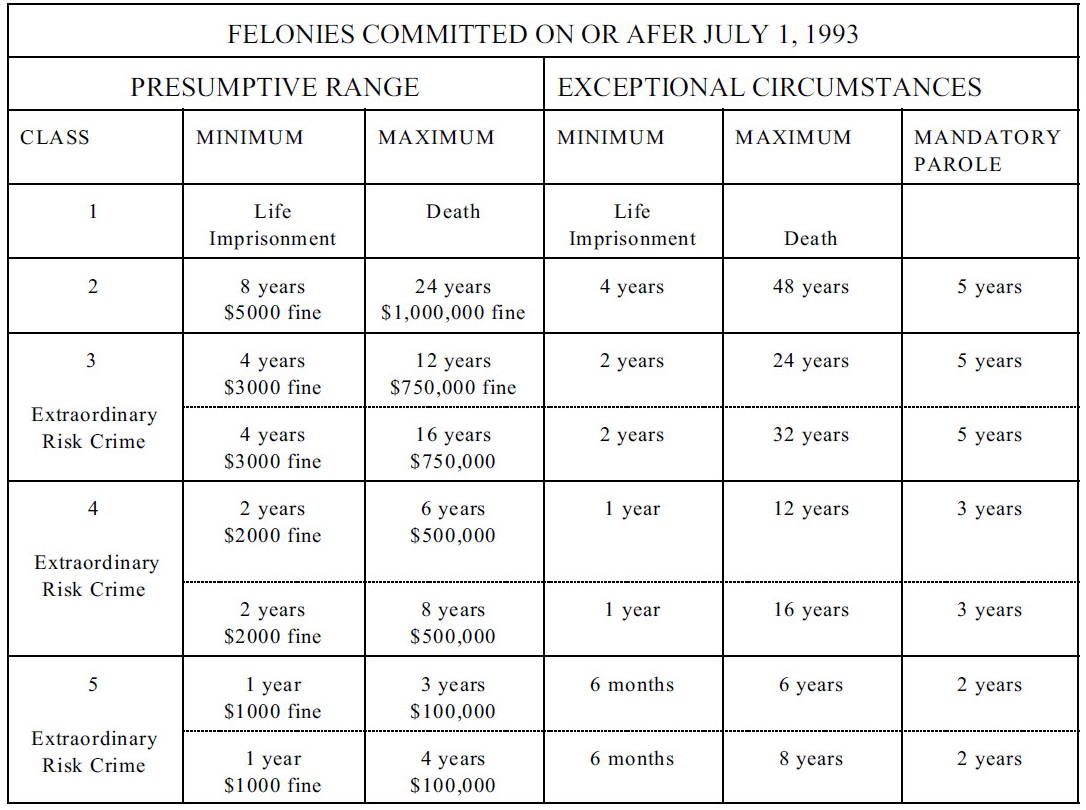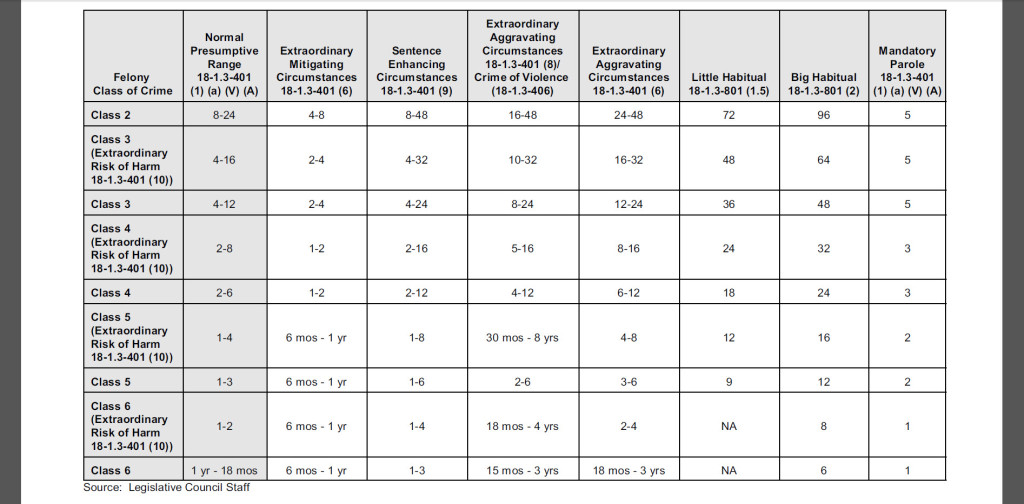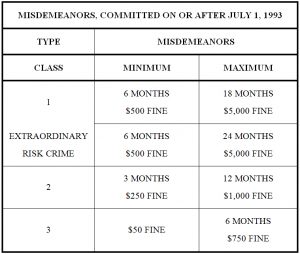Colorado Assault Crimes – Serious Bodily Injury Under Colorado Law

By H. Michael Steinberg Colorado Criminal Defense Lawyer
Introduction – Level of Injury In a Colorado Assault Case Critical Difference – Definitions Under Colorado Law Offer Little Clarity
A Colorado jury’s finding that a defendant caused serious bodily injury (as opposed to the lesser form of injury – bodily injury) in an assault prosecution under Colorado law (a fistfight for example), can mean a felony conviction with a possible – or in some cases such as First Degree Assault (F-3) a mandatory eight-year prison sentence.
This article visits the issues and the history underlying the evolution of the definition of serious bodily injury in Colorado assault cases and provides a close examination of Colorado law as it applies to what should be proven before a jury may make a finding of serious bodily injury.
Serious Bodily Injury Under Colorado Law
Section 18-1-901(3)(p) – Defines “Serious Bodily Injury” under Colorado law:
“Serious Bodily Injury” means Bodily Injury which,
Either at the time of the actual injury or at a later time,
involves substantial risk of death,
a substantial risk of serious permanent disfigurement,
a substantial risk of protracted loss or impairment of the function of any part or organ of the body, or
breaks, fractures, or burns of the second or third degree.
Section 18-1-901(2)(C) – Defines “Bodily Injury” under Colorado law:
“Bodily Injury” means:
physical pain, illness, or
any impairment of physical or mental condition.
A jury determines whether an alleged victim has suffered bodily injury based on the evidence admitted at trial.
The Model Penal Code (MPC), upon which many of the criminal codes in the United States are based, contains these definitions:
Most of the States have adopted major portions of the American Law Institutes Model Penal Code (MPC).
Model Penal Code – Articles 210–213
While the MPC itself is not binding law, more than half of all U.S. states have enacted individual state criminal codes using the MPC as a model. Therefore, the MPC is widely used by judges in criminal courts as a reference source.
It is instructive to review the Model Penal Code and how it is different from Colorado’s definition. Under the MPC:
(2) ‘‘bodily injury’’ means physical pain, illness or any impairment of physical condition;
(3) ‘‘serious bodily injury’’ means bodily injury which creates a substantial risk of death or which causes serious, permanent disfigurement, or protracted loss or impairment of the function of any bodily member or organ;
The Colorado Statute adds the following bold and italicized language to the MPC definitions:
Serious bodily injury means [b]odily injury which, either at the time of the actual injury or at a later time, involves a substantial risk of death, a substantial risk of serious permanent disfigurement, a substantial risk of protracted loss or impairment of the function of any part or organ of the body, or breaks, fractures, or burns of the second or third degree.
Elements of Crimes Define Those Crimes and Help Us Understand Them
First, it is instructive to know that all crimes can be broken into their constituent elements for the jury’s ease of understanding. During trial, Colorado criminal juries are given the Colorado Criminal Jury Instructions.
The jury instructions include simple flowchart-type breakdowns of the actual law that jurors must apply in Colorado assault trials. A jury’s conviction for any one of the following assault crimes exposes the defendant to either a mandatory prison sentence, a discretionary sentence that can include probation, community corrections, or prison, or a misdemeanor sentence which could include probation or possible jail in some form.
Felony and Misdemeanor Sentencing Charts
Second, to understand the impact of convictions for the different levels of Colorado felony and misdemeanor assault I include the following charts illustrate the possibilities for sentencing for convictions of every level of crime, and will assist in clarifying the possible penalty for each of the crimes identified:
Colorado General Felony Sentencing Grid
Colorado Crimes of Violence Mandatory Sentencing Grid
Colorado Misdemeanor Sentencing Grid
(Click to enlarge.)
The Impact of a Colorado Jury Finding Serious Bodily Injury – First, Second, and Third Degree Assaults Under Colorado Law
To understand the impact of a finding by a Colorado jury that a person intentionally caused serious bodily injury, (rather than the lesser physical damage of bodily injury), one needs to take a close look at the three “degrees” of Colorado Assaults.
While there are many versions (different sections – ways to commit the crimes) of First, Second, and Third Degree Assaults – this article will focus on the most common forms of those crimes involving serious bodily injury, bodily injury, and the use of a deadly weapon.
First Degree Assault – (Felony 3) – 18-3-202(1)(a)
The elements of the crime of assault in the first degree (use of a deadly weapon) are:
1. That the defendant,
2. in the State of Colorado, at or about the date and place charged,
3. with intent,
4. to cause serious bodily injury to another person,
5. caused serious bodily injury to any person,
6. by means of a deadly weapon.
First Degree Assault (use of a deadly weapon) is a class 3 Felony and requires a mandatory sentence to the Colorado Department of Corrections of between 8 and 32 years. There is no possibility of probation under the mandatory sentencing provisions of C.R.S.18-1.3-406. For further information, see my article and the statute by following these links: Understanding Colorado Felony Mandatory Sentencing
Second Degree Assault (Felony 4) – 18-3-203(1)(b)
The elements of the crime of assault in the second degree (use of a deadly weapon) are:
1. That the defendant,
2. in the State of Colorado, at or about the date and place charged,
3. with intent,
4. to cause bodily injury to another person,
5. caused such injury to any person,
6. by means of a deadly weapon.
The elements of Second Degree Assault substitute bodily injury for serious bodily injury, otherwise, they are identical to First Degree Assault. The critical difference is this: if a person is convicted of this nearly identical crime, while it is still a felony, the sentence MAY NOW INCLUDE PROBATION as an option available to the Colorado sentencing judge. This is not true for the First Degree Assault charge.
This means that a finding of serious bodily injury as opposed to simple bodily injury vastly changes the implications during sentencing.
Third Degree Assault (Misdemeanor 1)
The elements of the crime of assault in the third degree (knowingly or recklessly) are:
1. That the defendant,
2. in the State of Colorado, at or about the date and place charged,
3. knowingly or recklessly,
4. caused bodily injury to another person.
If a jury finds that the defendant did not act intentionally, did not use a deadly weapon, and did not cause serious bodily injury – the charge drops to the much less serious crime of Third Degree Assault, which is a misdemeanor.
Serious Bodily Injury – Poorly Defined and Difficult to Understand
Colorado Courts of Appeal are tasked with deciding cases that have been appealed from the trial level. These courts issue opinions that help the lower courts to interpret and to shape sometimes confusing terms such as serious bodily injury.
The jury must make a finding at the trial level in a Colorado felony assault case as to whether or not a defendant accused of a felony assault has caused bodily injury or serious bodily injury – sometimes this is a very difficult task.
Key Colorado Cases Interpreting the Nature of Serious Bodily Injury
As noted above – the Colorado Courts of Appeal have, over many decades, interpreted the critical concept of serious bodily injury.
Recall that Colorado’s “statutory scheme” distinguishes between the different degrees of Colorado’s crimes of assault based upon whether the injury was inflicted by means of a deadly weapon, and also, whether the victim’s injuries were so severe as to constitute serious bodily injury.
Some of the more important cases follow:
Stroup vs. People (1982) – 656 P.2d 680 (Colo. 1982) – The Actual Injury Inflicted
In this case, the prosecutor offered testimony from a medical expert who testified that “a stab wound to the victim’s forehead created a “substantial risk of death” (and therefore serious bodily injury) because the knife would have penetrated the brain had the point of entry been a fraction of an inch to the right or left.”
The lower court reversed the trial court on a critical point. The Stroup case stands for the proposition that while an expert physician’s testimony was relevant to the gravity of the risk created by the defendant, and may have been circumstantial evidence of the defendant’s intent to inflict serious bodily injury, the evidence was NOT relevant to prove that the defendant’s acts caused a substantial risk of death to the victim based on the actual injuries inflicted.
The Court essentially found that “what ifs” have no bearing on the jury’s duty to find or to exclude serious bodily injury.
The plain language of the “serious bodily injury” and “bodily injury” definitions focuses on the injury the victim actually suffered rather than the risk to the victim posed by the defendant’s intentional conduct.
People v. Brown (1983) 677 P.2d 406 (Colo.App. 1983) – Bullet Wound Did Not Involve a “Substantial Risk of Death”
Following Stoup, the 1983 case of People v. Brown was decided. In Brown, a bullet fired by the defendant hit two victims. Brown reaffirmed the decision in Stroup and specifically held that SBI (Serious Bodily Injury) focuses on the injury the victim actually suffered rather than the risk to the victim posed by the defendant’s conduct.
In Brown, the attending physician testified that the bullet which hit victim 1 had a “great potential for serious bodily injury,” but the doctor agreed that no damage was done to any of the second victim’s vital organs. He then testified that the bullet hitting victim had lethal “potential” but the victim suffered a “non-serious injury.”
Therefore, the testimony, again, improperly focused “on the risk to the victim rather than on the resultant injury the victim actually suffered.”
People v. Thompson (1988) 748 P.2d 793 (Colo. 1988)
– Later Healing Not Relevant to Serious Bodily Injury (Child’s Fractured Femur)
In this case, the child victim less than one-year-old, suffered a fractured femur while in defendant Thompson’s custody. The doctor, in this case, testified at trial that there was a twenty to thirty percent chance of permanent disability, along with a loss of developmental skills during the time the victim was confined to a cast.
The trial judge dismissed the child abuse charge finding no serious bodily injury because expert testimony offered by the defense established that the injuries were healing well with no permanent disability.
The judge’s ruling at the trial level was overturned on appeal in this important decision. The higher court found that the judge improperly focused on the wrong timeline – focusing on whether there was serious bodily injury to the child at the time of trial rather than at the time of the injury.
This decision was reaffirmed in 1994 in People v Rodriguez. In a nutshell, the case stands for the proposition that the fact that a victim healed well and made a good recovery is not relevant to the determination that the victim suffered a serious bodily injury.
People v Covington (1999) 988 P.2d 657 (Colo.App. 1999) – Distinguishes Stroup -Again Focus Now on Time of the Injury
In 1999, after reviewing the Stroup decision, the Covington Court found that a bullet wound, which entered the left thigh just below the pelvis, and exited the inner left thigh into the right thigh of a victim, posed a substantial risk of serious bodily injury at the time of the shooting, (prior to treatment).
Covington argued at trial that there was no serious bodily injury unless the bullet had actually struck and inflicted damage to an organ or system, and thereby created a serious risk of death, serious permanent disfigurement, or a permanent or protracted loss.
The bullet in this case did not actually strike an artery, bone, or nerve.
The emergency room doctor testified at trial about the risks associated with a bullet wound based on points of entry and exit. He testified that the fact that none of the structures or vessels actually involved arteries, bones, or nerves, whether fortuitously or not, did not diminish the fact that the wound actually inflicted involved a substantial risk of death, serious permanent disfigurement, or a permanent or protracted loss.
Since the emergency room physician focused on this wound and not the risks associated with a different wound or a wound in a different location, as was the case in Stroup, the Court found that a jury could properly find the wound was serious bodily injury.
The important distinction between the cases is this: the focus of the testimony in relation to the injury can be based upon the condition of the person as they entered the emergency room BEFORE they received their initial treatment and “not after they’ve been treated and stabilized and had the miracle of medicine…”
The Covington Court said this, “[w]hile we agree that the focus of the inquiry is on the injury and not the risk posed by defendant’s conduct, (Stroup v. People), … the definition of serious bodily injury speaks in terms of injury, not damage. In addition, the definition of serious bodily injury speaks in terms of “risk of loss, not realized loss.”
People v Summit (2004) – 104 P.3d 232 (Colo.App. 2004) “Substantial Risk is Clear Enough”
In 1985, §18-1-901(3)(p) defining serious bodily injury was amended to its current version. The new definition repeats the phrase “a substantial risk of” in both the second and third clauses of the definition.
The Summit Court found the new definition was constitutionally sound, and that the term “substantial” has a commonly understood meaning: “not seeming or imaginary; not illusive; real, true,” and that the term has been applied by “assessing both the likelihood that harm will occur and the magnitude of the harm should it occur.”
The Court found that it should be obvious to a juror that ‘serious bodily injury’ has as a threshold requirement – a greater degree of intended injury than ‘bodily injury.’
In Summit, the victim’s injuries were “lacerations that were gaping wounds … that appeared to extend down through the fat layer underneath the skin, down to the layer on top of the muscle, and … were obviously contaminated.”
The doctor in that case testified that the wounds could lead to “infections, and/or subsequent development of complications that could result in possible amputation of the extremities.”
Citing Thompson, that healing injuries with no permanent disability at the time of trial does not exclude consideration of the nature of the injuries at the time they were inflicted, …led to the conclusion in this case that these injuries were sufficient to establish serious bodily injury.
People v Jaramillo (2008) 183 P.3d 665 (Colo.App. Div. 5 2008) – Fractures Not Just Limited to Bone Fractures – Includes Fractured Cartilage
In Jaramillo, the victim suffered fractured cartilage in her nose. The defendant argued that fractured cartilage is not sufficient to establish serious bodily injury as defined in section 18-1-901(3)(p). He argued that the “fractures” referred to in the definition of serious bodily injury were limited to bone fractures.
The Court found that the jury could find the victim suffered serious bodily injury and that the term “fractures,” as used in section 18-1-901 (3)(p), includes cartilage fractures.
So What Exactly IS Serious Bodily Injury?
Colorado’s definition of serious bodily injury, even with the changes made over the years, remains ambiguous and a source of confusion, controversy, and constant debate in legal circles. However, there is no debate about the terrible impact to the accused of a finding by a jury of serious bodily in a felony criminal trial.
While “Serious bodily injury (SBI),” has been interpreted by the courts in various ways, the definition sent to the jury remains the same – SBI is still defined as bodily injury which, either at the time of the actual injury or at a later time, involves a substantial risk of death, a substantial risk of serious permanent disfigurement, a substantial risk of protracted loss or impairment of the function of any part or organ of the body, or breaks, fractures, or burns of the second or third degree.18-1-901(3)(p).
As noted, while the Model Penal Code was enacted in 1963 to serve, literally, as a “model” for all of the other states, there was a large “doughnut hole” of bodily harms that were not addressed by the Code’s authors.
The authors of the MPC were well aware that they failed to address the wide variety injuries sustained in the human experience, and the many types of “intermediate” bodily harm not addressed by the model code.
They apologized in their notes, stating that their concern at the time was to develop a system that “properly graded” the wide range and variety of conduct that constitutes assault and that it would later be “necessary for the Model Code to deal separately with conduct ranging from the simple assault to the infliction of serious, permanent injury.”
It never happened.
When it came to establishing “grades of physical harm,” Colorado’s Code (and the MPC) provide only two grades – and those two are apparently deemed “enough”. The MPC is silent on whether a level of harm in-between “bodily injury” and “serious bodily injury” was ever even considered.
Colorado’s courts add nuance to the definition of serious bodily injury and bodily injury on a case-by-case basis. And so it remains in our system that a victim’s exaggerated claims, ambiguously backed by a doctor’s opinion, can expose the accused to many mandatory years in prison for First Degree Assault.
Entirely in the Jury’s Hands – The Black Eye Disfigurement Hypothetical
Let’s consider a bar fight. The defendant strikes his opponent in response to an insult hurled at the defendant’s girlfriend. The alleged victim develops a large swollen cheek, a black eye, and suffers a mild concussion. Under Colorado law – do these injuries constitute serious bodily injury? Does the distortion to the victim’s face, the black eye, equate to a substantial risk of serious permanent disfigurement? Is the mild concussion a “substantial risk of the protracted loss or impairment of the function of any part or organ of the body”?
It is unclear.
When a later evaluation by an emergency room physician or defense retained expert examines the alleged victim and finds that the impact of the punch was temporary – we are left grappling with the meaning of language added by the Colorado State legislature –” either at the time of the actual injury or at a later time.”
Conclusion – Colorado Assault Crimes – Serious Bodily Injury Under Colorado Law
A Colorado state District Attorney’s decision to charge a felony assault- when there is a serious question of whether the alleged victim suffered serious bodily injury- is not the end of the case – it is the beginning of the fight.
An experienced Colorado criminal defense lawyer should thoroughly examine all of the medical records and then retain a defense expert to review the findings relied upon by the prosecutor and should be prepared to take this issue to the jury, if necessary.
If you found any information I have provided on this web page article helpful please share it over social media so that others may find it. Thank you.
Never stop fighting – never stop believing in yourself and your right to due process of law.
 ABOUT THE AUTHOR: H. Michael Steinberg – Email The Author at hmsteinberg@hotmail.com – A Denver Colorado Criminal Defense Lawyer – or call his office at 303-627-7777 during business hours – or call his cell if you cannot wait and need his immediate assistance – 720-220-2277. Attorney H. Michael Steinberg is passionate about criminal defense. His extensive knowledge of Colorado Criminal Law and his 38 plus years of experience in the courtrooms of Colorado may give him the edge you need to properly defend your case.
ABOUT THE AUTHOR: H. Michael Steinberg – Email The Author at hmsteinberg@hotmail.com – A Denver Colorado Criminal Defense Lawyer – or call his office at 303-627-7777 during business hours – or call his cell if you cannot wait and need his immediate assistance – 720-220-2277. Attorney H. Michael Steinberg is passionate about criminal defense. His extensive knowledge of Colorado Criminal Law and his 38 plus years of experience in the courtrooms of Colorado may give him the edge you need to properly defend your case.
 Colorado Criminal Lawyer Blog
Colorado Criminal Lawyer Blog




